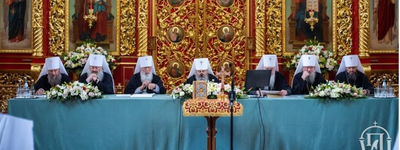A single Ukrainian Orthodox Church: will the plurality become a majority?
On the question of a unified Ukrainian Orthodox Church, a total of 42 percent of the respondents supported the initiative…
A recent survey by the Kyiv International Institute of Sociology (KIIS) included several questions about Ukrainian citizens’ religious affiliation (Jaroslaw Martyniuk, “The Orthodox Church in Ukraine in numbers,” The Ukrainian Weekly, 17 August 2018). Carried out in all the oblasts of Ukraine except for the Russian-occupied Donetsk and Luhansk oblasts (where interviews were conductedoccu only in the Ukrainian-controlled areas) and the occupied Crimea between 18 May and 5 June 2018, it comprised 2,025 interviews.
Among other questions, the survey asked respondents about their attitude toward religion, their level of religiosity, which of a list of religious groups they belonged to or felt closest to, and their opinion on President Petro Poroshenko’s April 2018 initiative for a single Ukrainian autocephalous Orthodox Church.
About 43 percent of the respondents identified with either of the two independent Ukrainian Orthodox Churches, the UOC-Kyivan Patriarchate (41.4 percent) or the Ukrainian Autocephalous Orthodox Church (UAOC) (1.6 percent). Only 17 percent identified with the UOC-Moscow Patriarchate (UOC-MP). This confirms other surveys that have shown roughly three times as much support for the UOC-KP as for the UOC-MP during the past twenty years. Another 2.5 percent identified with the Russian Orthodox Church.
Those who identified with the Ukrainian Greek-Catholic Church (UGCC) numbered 7.5 percent, while Roman (Latin-Rite) Catholics numbered 0.2 percent.
According to Jaroslaw Martyniuk, similar surveys in Ukraine and Russia show that Ukrainians have been more active and religious than Russians. The KIIS survey showed that in Ukraine, 16 percent of the population do not associate with any religion. Most of them live in regions other than western Ukraine, which is known for its high level of religiosity. (On the question of religious affiliation, 6.2 percent answered “don’t know” or refused to answer.) However, a Pew survey in 2015-2016 showed that those unaffiliated with any religion numbered only 7 percent in Ukraine and 15 percent in Russia.
The KIIS study indicated that frequency of attendance at religious services is higher among members of the UGCC and the UAOC than among members of the UOC-KP and UOC-MP. This may reflect a higher level of religious consciousness, knowledge, and motivation in these groups. Nearly half of UGCC members say they attend services weekly; 20 percent attend monthly and 29 percent only on holidays. Among members of the UOC-MP and UOC-KP, by contrast, only 10 percent say they attend weekly, 12 percent monthly, and nearly 70 percent only on religious holidays. Among Protestants, who number 1.7 percent of the population surveyed, three-quarters attend at least weekly.
Similarly, a Pew study of 2015-2016 showed that only 12 percent of self-identified Orthodox in Ukraine attended church services weekly (compared to 6 percent of Orthodox in Russia), while 43 percent of Catholics in Ukraine did so (nearly matching the 45 percent of Catholics who attend weekly in Poland).
One surprise of the KIIS survey is that slightly over a third of UOC-MP members live in western Ukraine. Many of these may be members of pre-war Greek-Catholic parishes that were taken over by the Russian Orthodox Church after 1946 and did not return to the UGCC after 1989. Less surprising is that some 66 percent of Protestants live in western Ukraine; that, after all, seems to be a highly religious area regardless of denomination.
On the question of a unified Ukrainian Orthodox Church, a total of 42 percent of the respondents supported the initiative, while 31 percent did not. Over 25 percent said they had difficulty in deciding. Not surprisingly, the highest level of support was in western Ukraine: 56 percent. In the central region, it was 45 percent, in the south only 25 percent, and in the east 22 percent. Nearly 40 percent in the south and east said it was difficult to say. One may speculate that many Greek-Catholics support a unified UOC out of patriotic reasons. The uncertainty and weak support for this initiative in the south and east may be the result of a general lack of religiosity and an absence of reliable religious information.
Will the plurality that supports a single Ukrainian Orthodox Church become a majority? With a quarter of the population having “difficulty in deciding,” it may only be a matter of information – and time.










